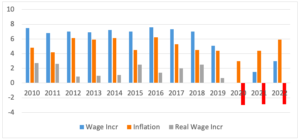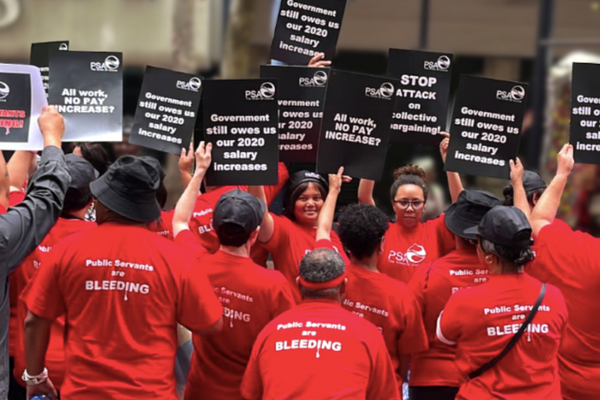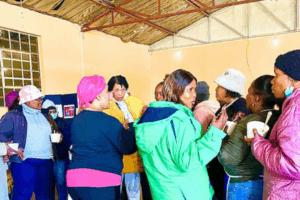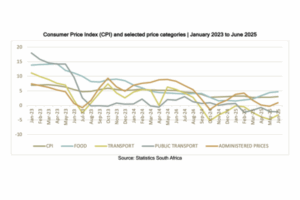An onslaught on the collective bargaining process and an effort to reverse the gains achieved over the years. That’s how trade unions described the move by the government to unilaterally push through a 3% wage increase while workers in the public sector demand an above-inflation increase of 10%.

But what does a three per cent wage increase mean for the lowest-paid worker?
The current average basic wage for salary level 1 is R8 630 per month in 2022. If we add the 3% wage increase, it translates to an increase of R258.90 per month. The new average basic wage after the increase is R8 888.90 per month in 2022. This translates to R3 106.80 per year.
The price increase (inflation rate) is currently at 7.5% in September 2022. If we factor in the inflation rate of 7.5%, the real wage increase will be -4.5% in 2022.
Figure 1: Inflation increase Vs Real Increase
 Source: LRS Wage Calculator
Source: LRS Wage Calculator
In 2020, the wage increase was 0%. If we take the annualised inflation rate of April 2020 at 3%, workers gain a real percentage wage increase of -3%. Note that inflation data is backwards-looking while a wage increase is forward-looking, i.e. operational for the coming year).
Real wages were eroded by -3% in 2021 due to the wage freeze at the Public Sector Co-coordinating Bargaining Council (PSCBC) in 2020. Real wages increased less than the price levels and eroded the buying power of wages. Hence, public sector workers bought fewer goods and services. Workers will need to recoup the -3% to maintain the buying power of their wages in 2020.
Figure 2: Public Sector Wage Increases, Inflation and Real Wage Increases | 2010-2022
 Source: LRS Actual Wage Rates Database (AWARD)
Source: LRS Actual Wage Rates Database (AWARD)
Figure 2 describes wage settlement levels between 2010 and 2022 in public sectors and also tracks the average inflation rate over the period, showing what the real wage increase has been each year. Real wages in the public sector declined from 2020 to 2022.
Wage gap
In 2022, the President approved 3 per cent across-the-board pay increases for Ministers. Before the wage increase, Ministers earned R200 136 per month and R206 140 in 2022. This translates to an increase of R6004.08 per month or R72 048.99 per year. This is a huge gap when compared to the lowest-earning employees who got a wage increase of R258 per month or R3 106 per annum.
Public sector employees (especially those who earn low wages) will need more than the 3% wage increase to sustain their living standards. According to Statistics South Africa, in September 2022, public transport, food and administrators prices increased by 22.1%, 12.3% and 13.4%, respectively. The R238 wage increase per month will not relieve the many workers who spend some R1200 a month on public transport (taxis).
The Pietermaritzburg Economic Justice and Dignity Group says the average cost of the household food basket increased by R470.28 (10.9%) – from R4,317.56 in October 2021 to R4,787.83 in October 2022.
Hence the position of workers in the public sector has not improved as the wage increases secured have been eroded by inflation.
How should we approach bargaining?
- Union negotiators should be able to distinguish between a nominal wage and a real wage to determine the impact of inflation on wages.
- The employer should note that real wage increases must be above the inflation rate. Workers are interested in what their wages can buy, not merely the take-home pay.
- Unions should develop other benchmarks for negotiations besides the average annual inflation, as employers often table sub-inflation offers. Compare and interrogate the benchmarks used to determine the remuneration of directors.







